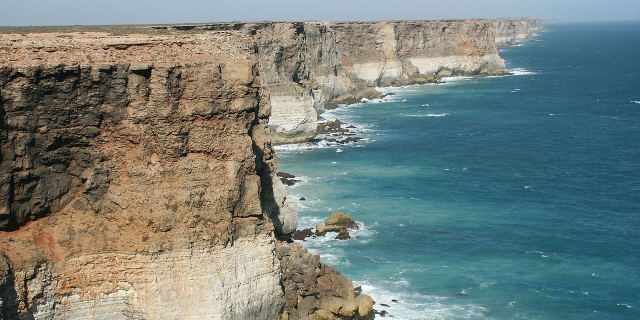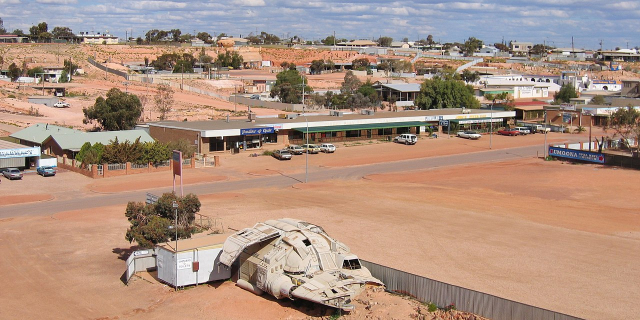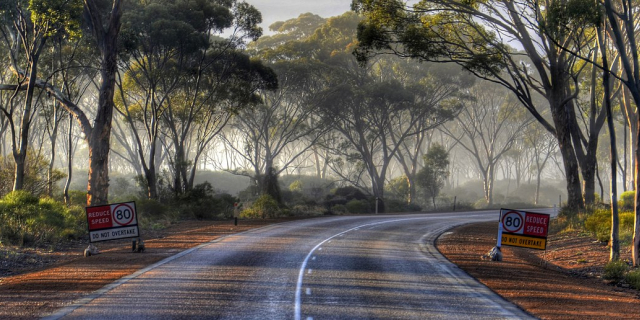Dingo Fence
The Dingo Fence or Dog Fence is a pest-exclusion fence in Australia to keep dingoes out of the relatively fertile south-east part of the continent (where they have largely been exterminated) and protect the sheep flocks of southern Queensland. It is one of the longest structures in the world. It stretches 5,614 kilometres (3,488 mi) from Jimbour on the Darling Downs near Dalby through thousands of kilometres of arid land ending west of Eyre peninsula on cliffs of the Nullarbor Plain above the Great Australian Bight near Nundroo. It has been partly successful, though dingoes can still be found in parts of the southern states. Although the fence has helped reduce losses of sheep to predators, this has been countered by holes in fences found in the 1990s through which dingo offspring have passed and by increased pasture competition from rabbits and kangaroos.
 A portion of the Dingo Fence in 1952 in Queensland
A portion of the Dingo Fence in 1952 in Queensland Dingo pups found just metres east of the Dingo Fence in 1976
Dingo pups found just metres east of the Dingo Fence in 1976The earliest pest exclusion fences in Australia were created to protect small plots of cropland from the predation by marsupials. In the 1860s and 1870s, introduced rabbit populations began to spread rapidly across southern Australia. By 1884, a rabbit-proof fence was built. Having been unsuccessful at keeping rabbits out, and more successful at keeping out pigs, kangaroos, emus and brumbies, and as more sheep farms were established, the interest for a dingo-proof barrier increased enough that government funds were being used to heighten and expand the fence. In 1930, an estimated 32,000 km of dog netting in Queensland alone was being used on top of rabbit fences. Prior to 1948, the idea of a Dingo Barrier Fence Scheme had not come into fruition as a statewide project for which annual maintenance and repair were kept. Since this time, there have been pushes to move away from a method of barrier-exclusion to complete extinction of the dingo and wild-dog cross-breeds. Poisoning the species with compound 1080 (sodium monofluoroacetate) baits has been seen as a much cheaper alternative than fence maintenance. A compromise in the form of the continued use of poison and the shortening of the fence from its previous length of over 8000 km has been made.
In 2009 as part of the Q150 celebrations, the dingo fence was announced as one of the Q150 Icons of Queensland for its role as an iconic "innovation and invention".[1]

























Add new comment